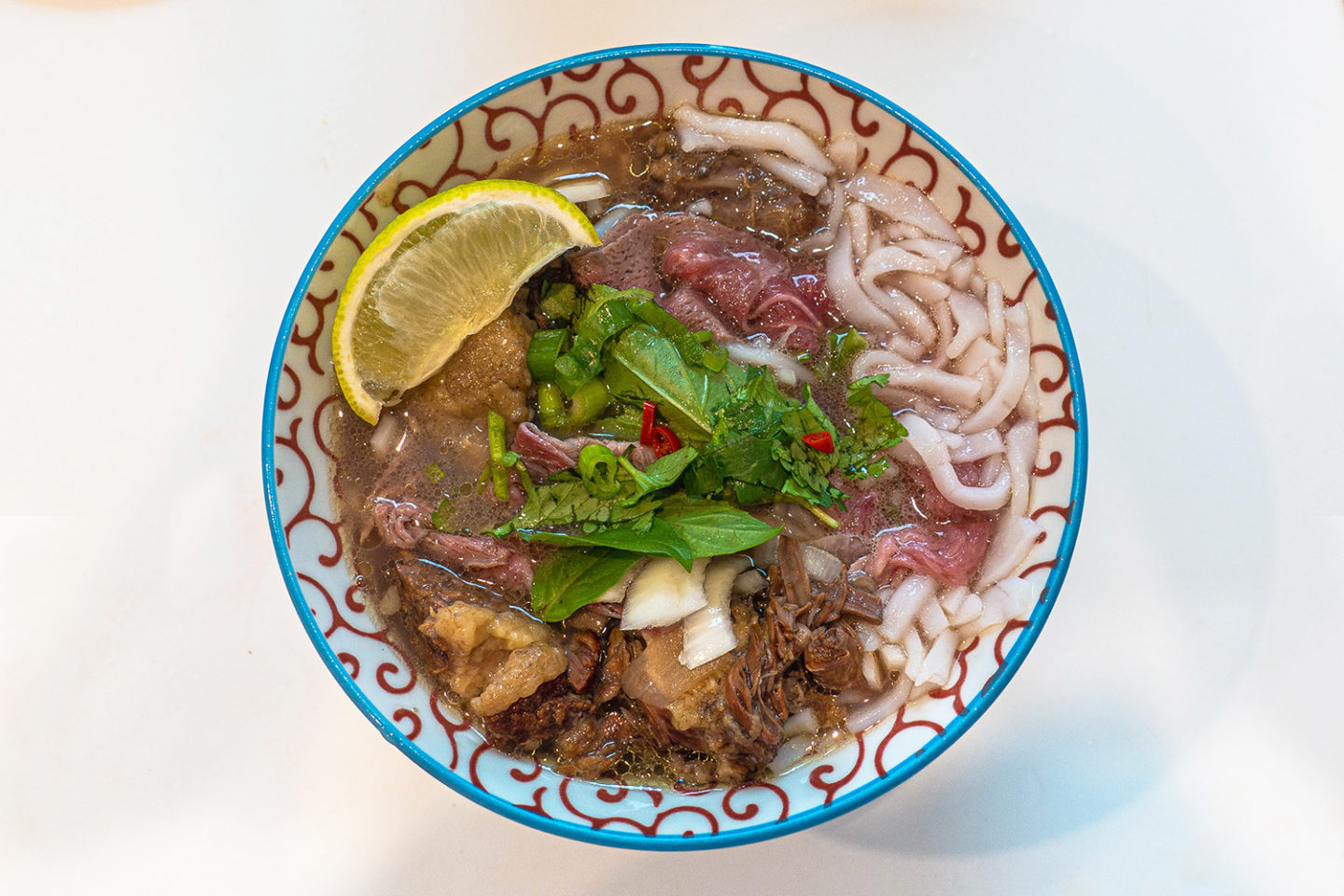
Hello! It’s been a while since I had time to cook and with the 3 weeks of rain and hail in Sydney, I thought it was a good opportunity to tackle phở, aka the most famous Vietnamese beef noodle soup. This dish was put off for the longest time because I was intimidated by the flavours but huzzah, I came and conquered today 😝.
The total cost of all ingredients was $80. I used my 14L pot, filling the water to approximately 10-11L. We were able to eat 15 large bowls from this.
The total cost of all ingredients was $80. I used my 14L pot, filling the water to approximately 10-11L. We were able to eat 15 large bowls from this.
Shopping
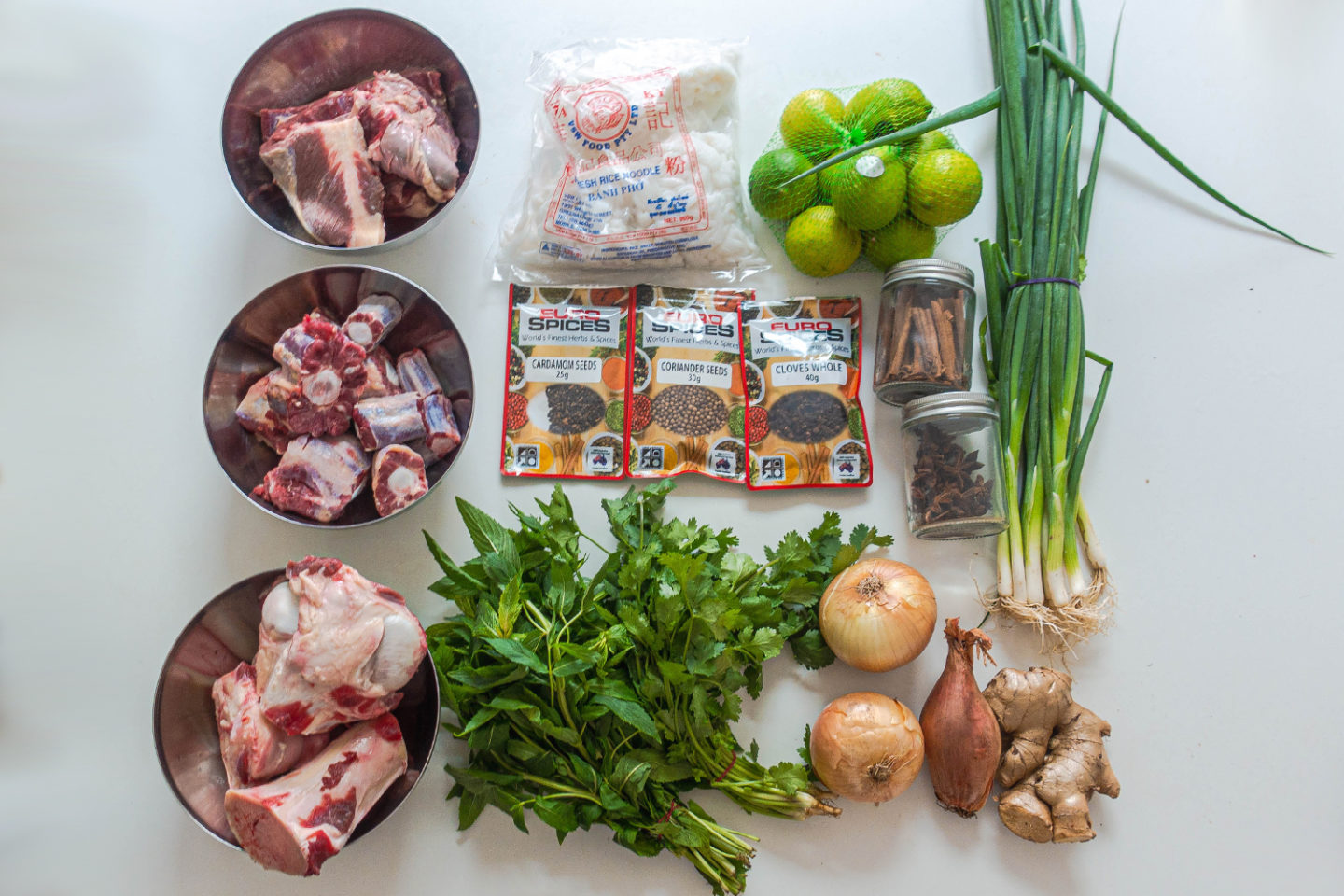
From the butcher:
Seasoning (amount used for 10L broth):
- 1.5 kg brisket
- 1 kg beef marrow or knuckle bones
- 1 kg oxtail
- 300g of thinly sliced sirloin
Seasoning (amount used for 10L broth):
- Salt
- Rock sugar
- Fish sauce
- Peppercorn crushed
- Star anise (16 pieces)
- Cloves spice (12 pieces)
- Cinnamon sticks (8 pieces)
- Cardamon pods (10 pieces)
- Coriander seeds (2 tablespoons)
From the grocery store:
- 3 onions
- 1 Ginger
- 1 bunch of spring onions (scallions)
- 1 bunch of Thai basil
- 1 bunch of coriander (cilantro)
- Lime / lemon
- Chilli
- Hoisin sauce
- Vietnamese satay sauce (sa tế)
- Fresh phở noodles
Prepping
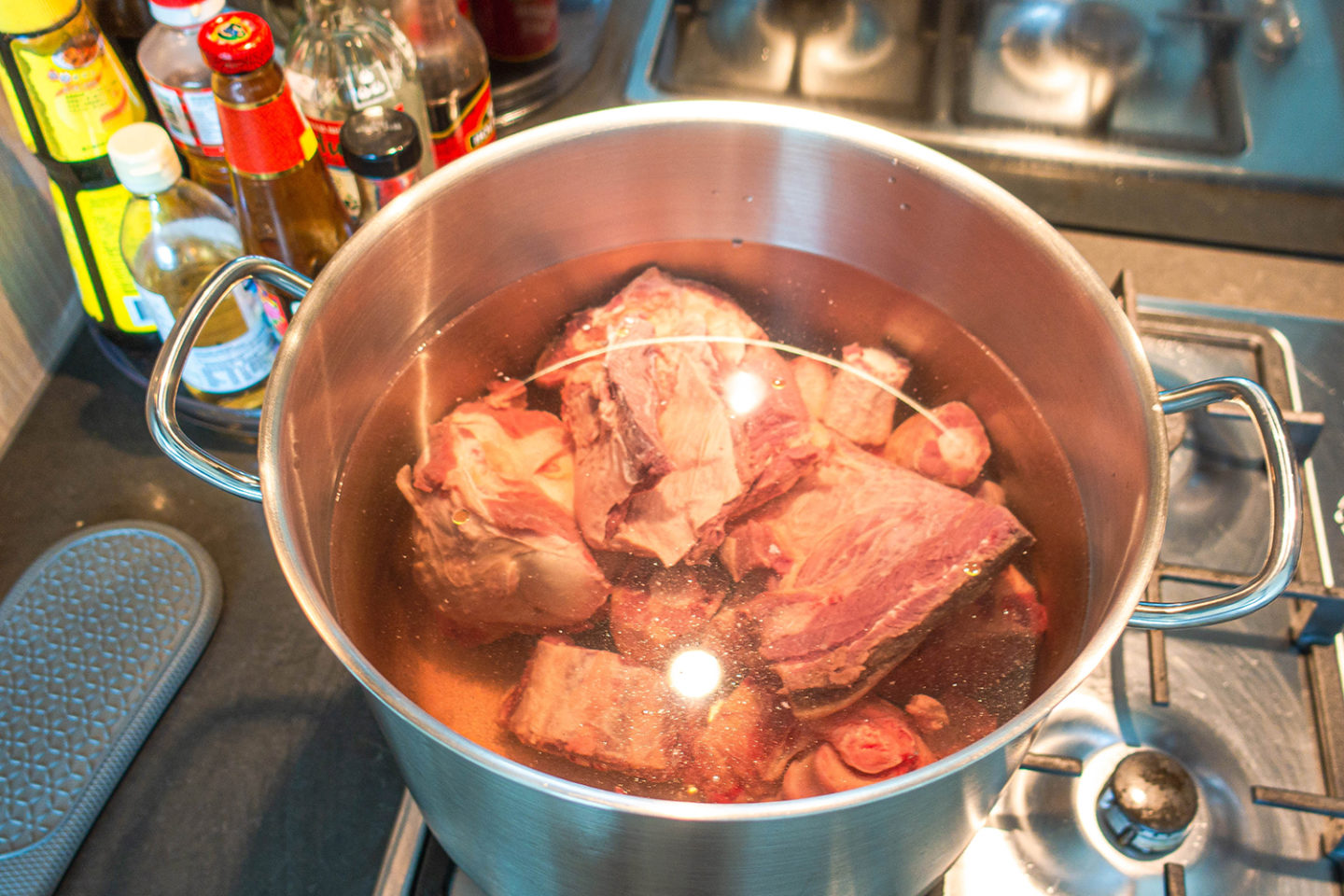
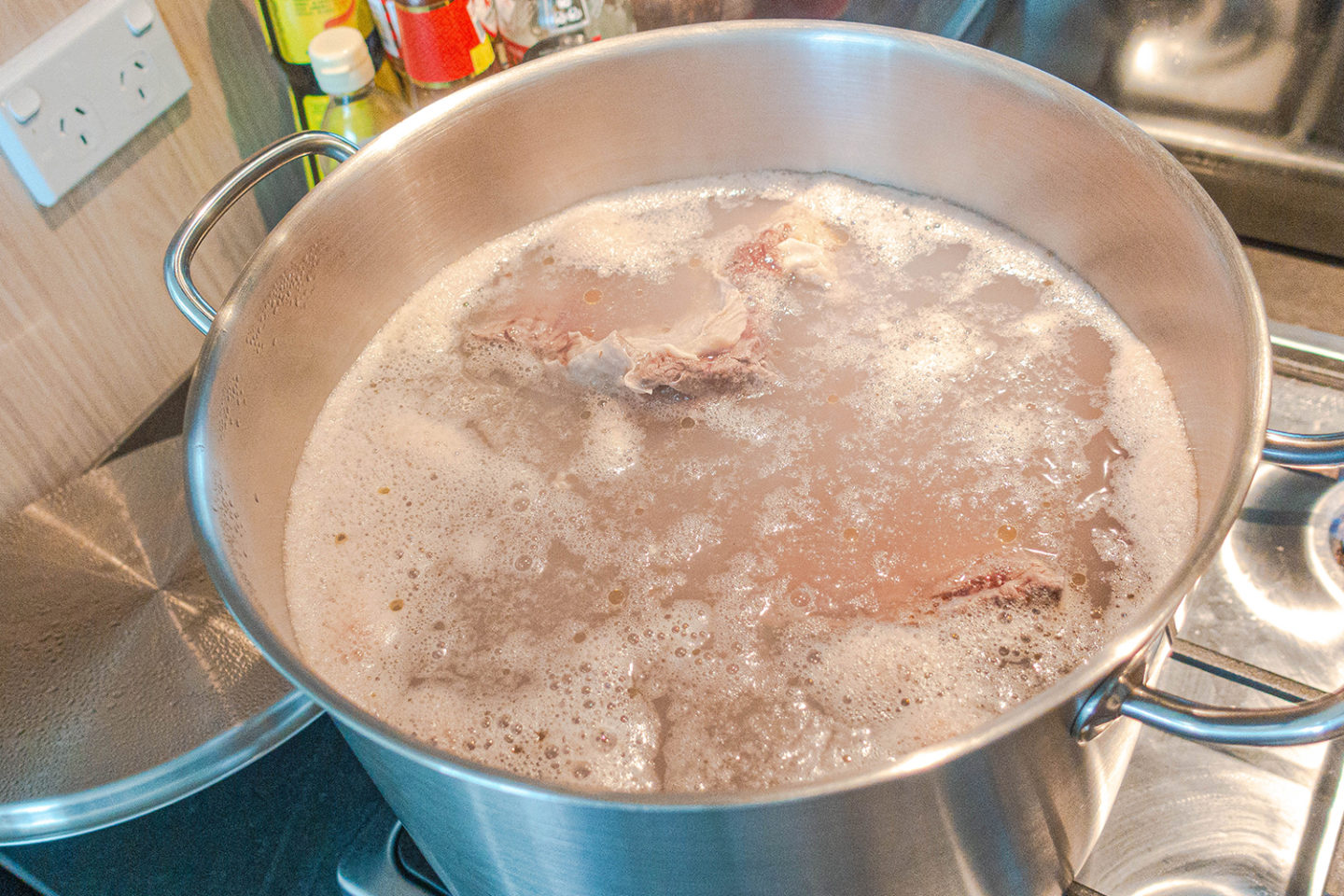
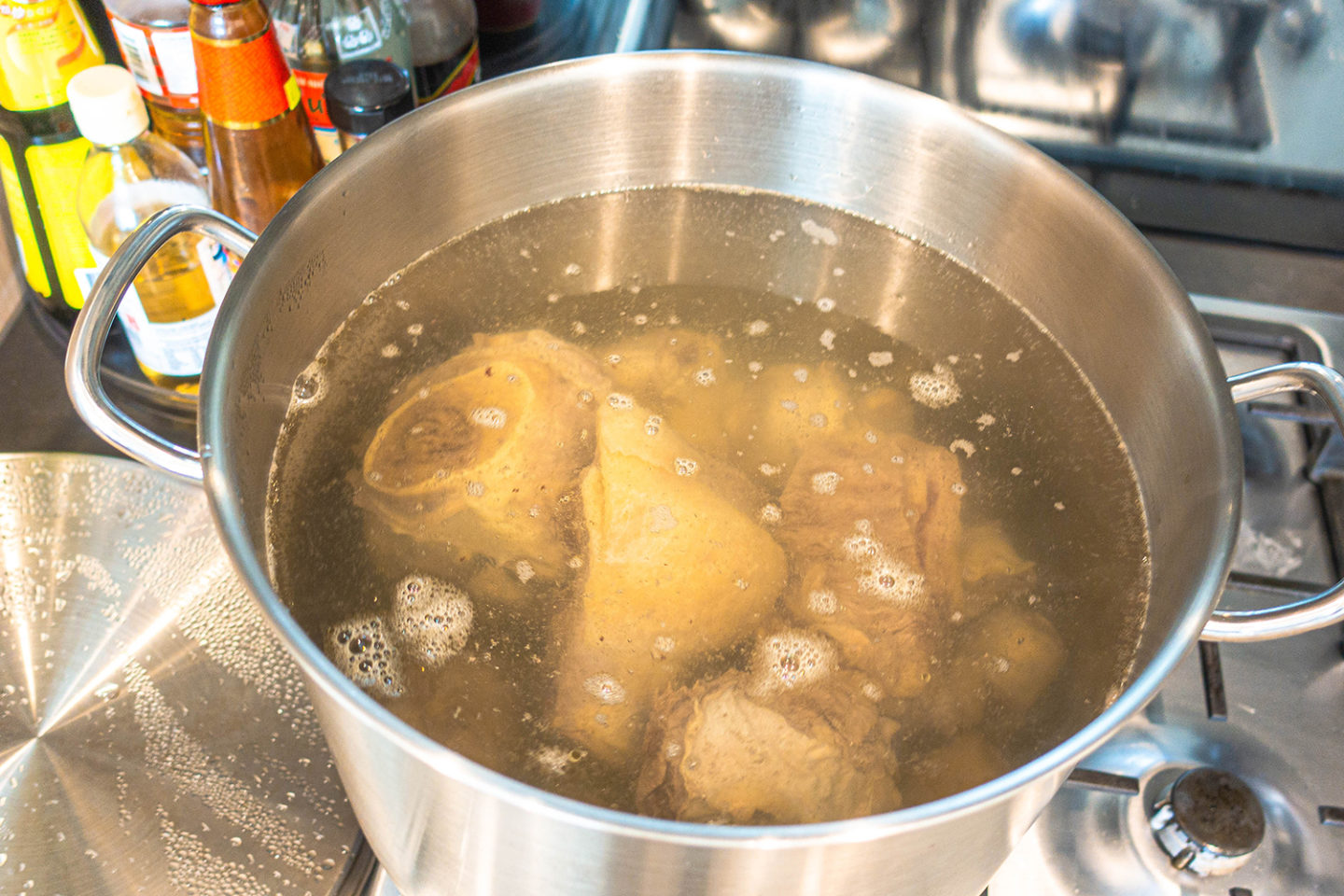
For my broth:
- Cleaned all the bones and meat, then into pot (pic 1 on left)
- Parboiled for 10 minutes on high heat (pic 2 on right)
- Took out bones/meat, drained all the gunk/water and washed my pot
- Put bones and 12-13L water back in and boil on high heat
- Once boiling, reduced heat to medium simmer and continued scooping up gunk/impurities if neccessary (pic 3)
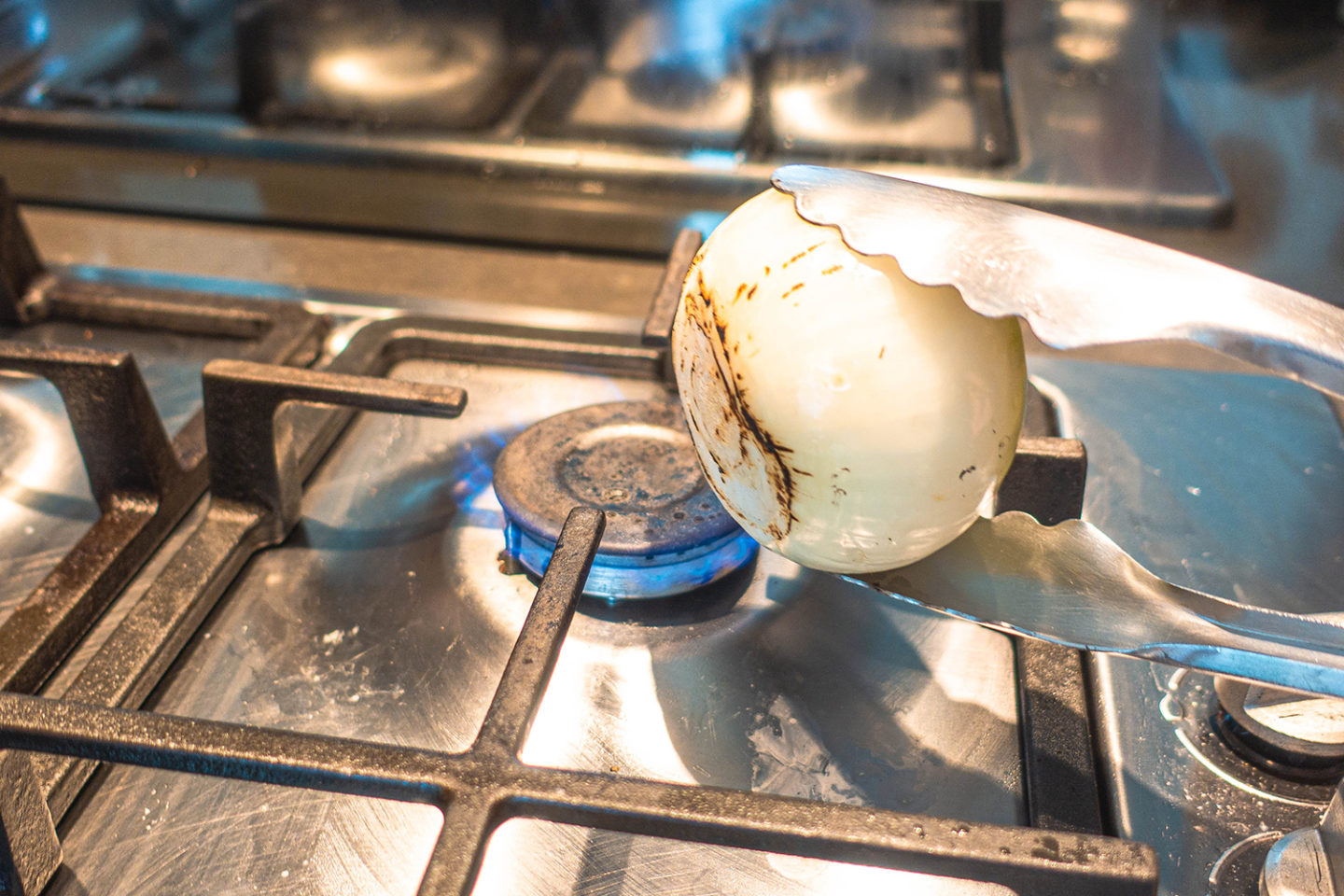
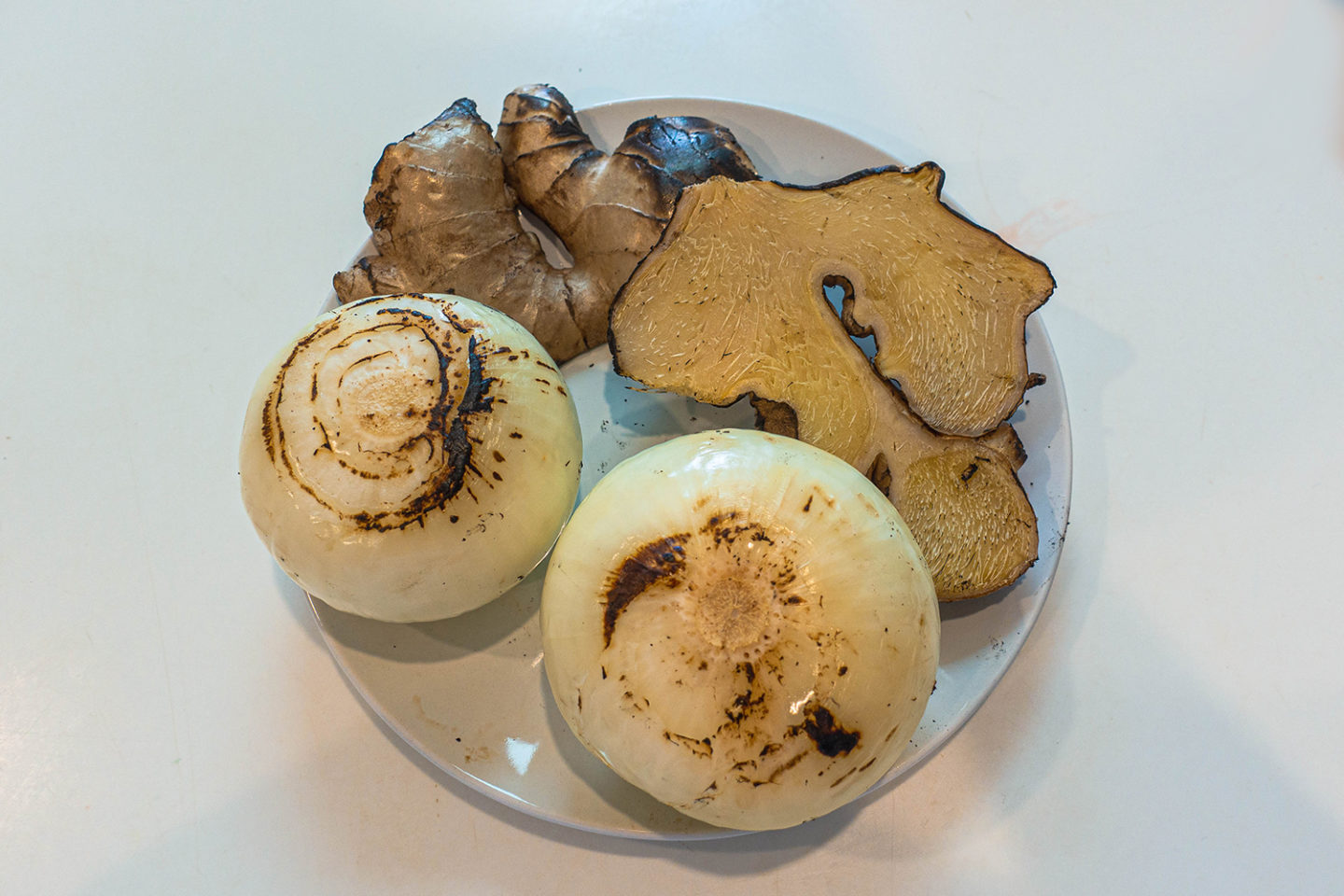
For an extra oomph in flavour, I charred my onions and ginger on the open flame for about 5 minutes. The ginger was sliced in half lengthwise.
This step separates an average phở from a good one, trust 😉 It’s very noticeable in the taste. The charred onions and ginger give the broth an extra fragrant depth of flavour.
This step separates an average phở from a good one, trust 😉 It’s very noticeable in the taste. The charred onions and ginger give the broth an extra fragrant depth of flavour.
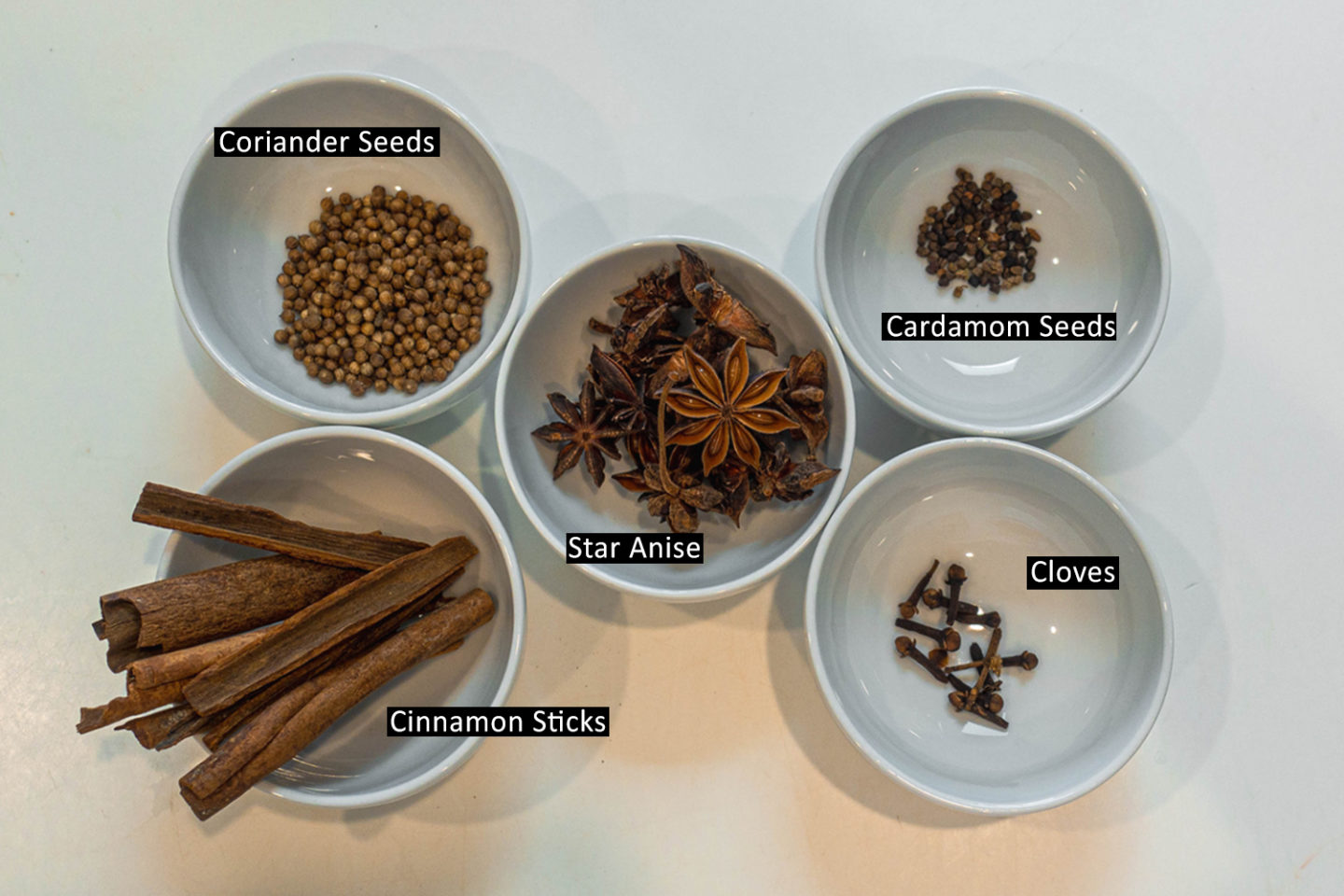
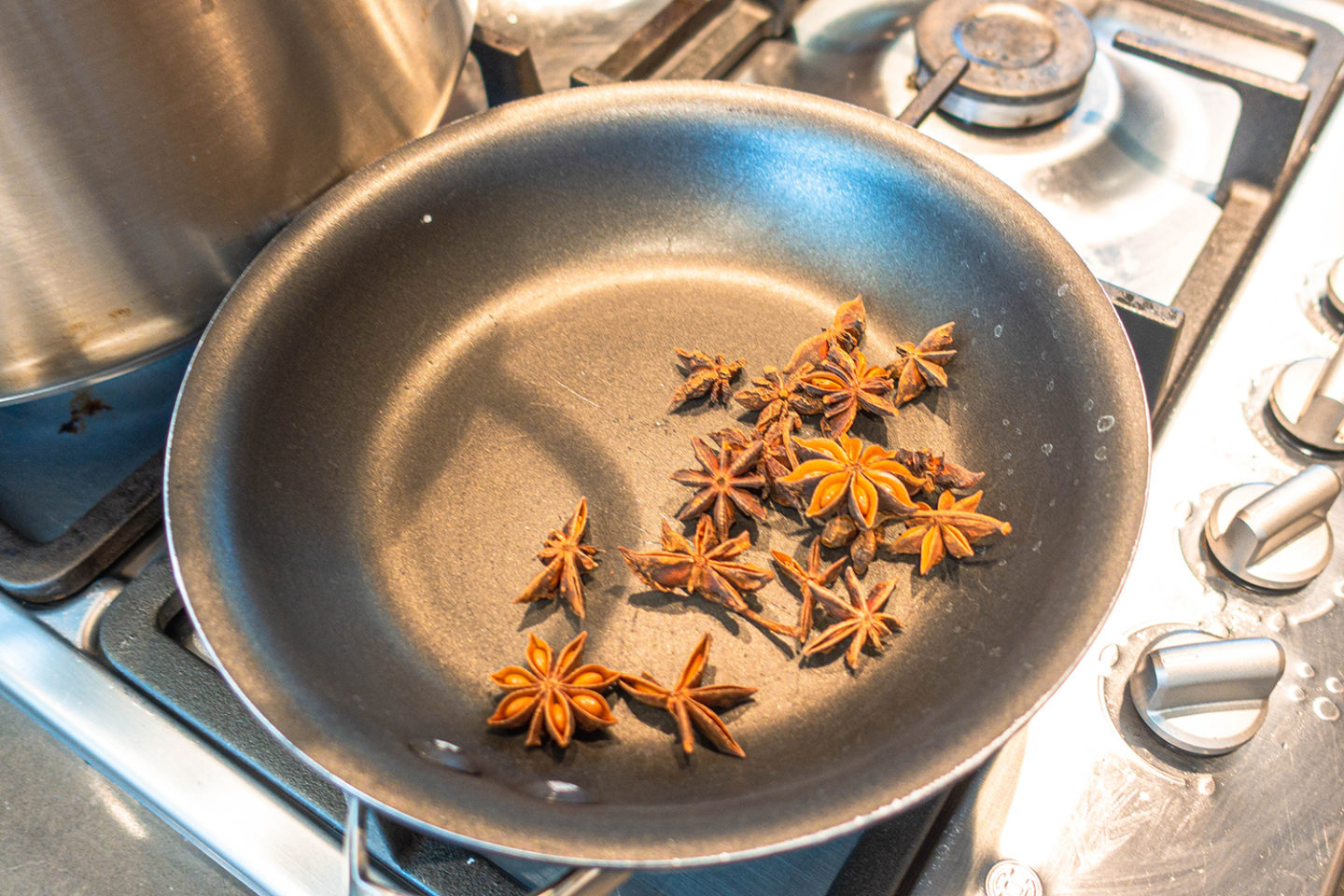
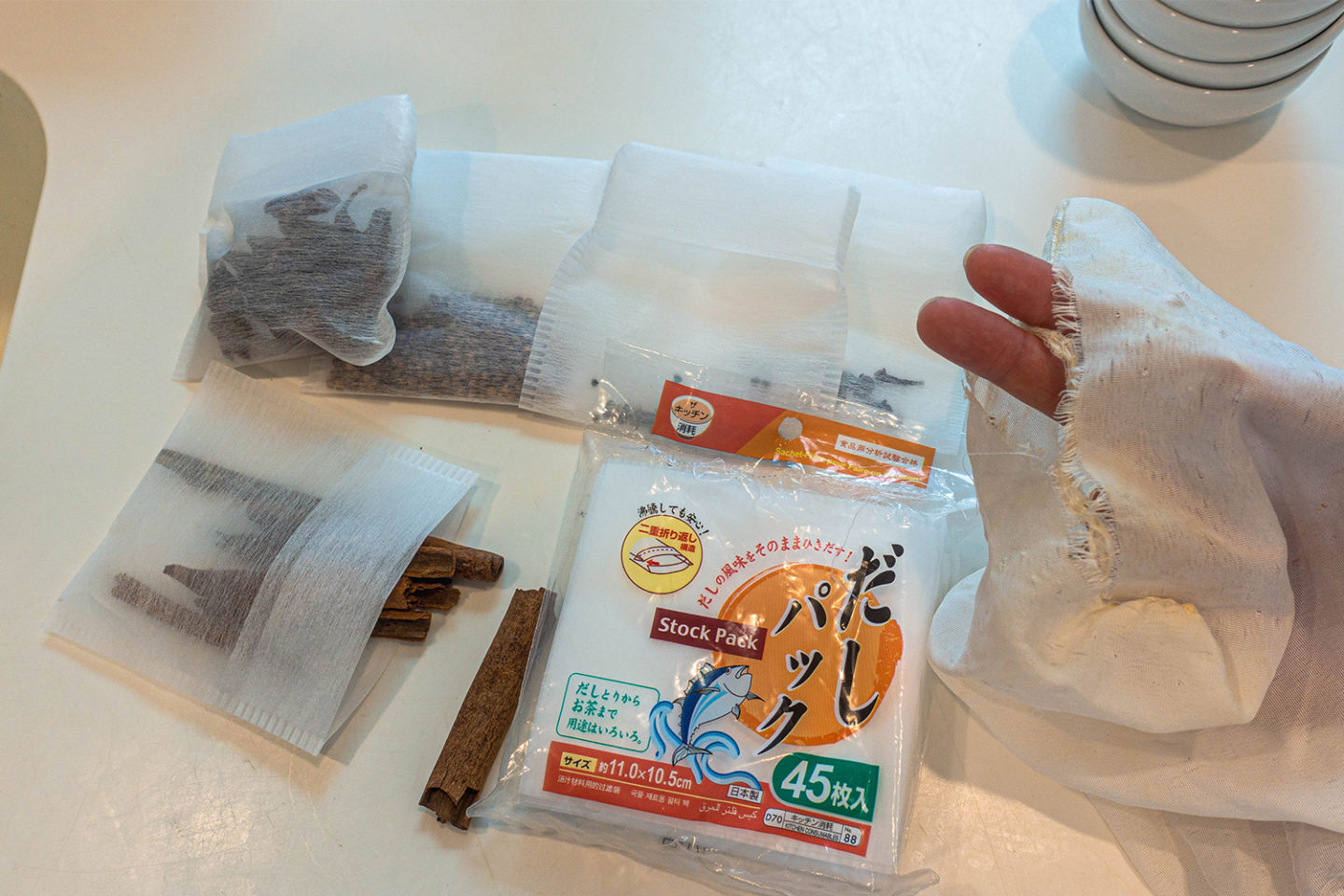
I also toasted the spices on a non-stick pan over medium heat.
Again, a necessary step to enhance the flavours of the broth.
My soup bag ripped so I used these Japanese seasoning packets for each spice. I absolutely hate it when I’m sipping my broth and accidentally swallow/lick star anise or cloves 😫 These seasoning packets also made it so much easier to remove the spices at the correct time too.
My soup bag ripped so I used these Japanese seasoning packets for each spice. I absolutely hate it when I’m sipping my broth and accidentally swallow/lick star anise or cloves 😫 These seasoning packets also made it so much easier to remove the spices at the correct time too.
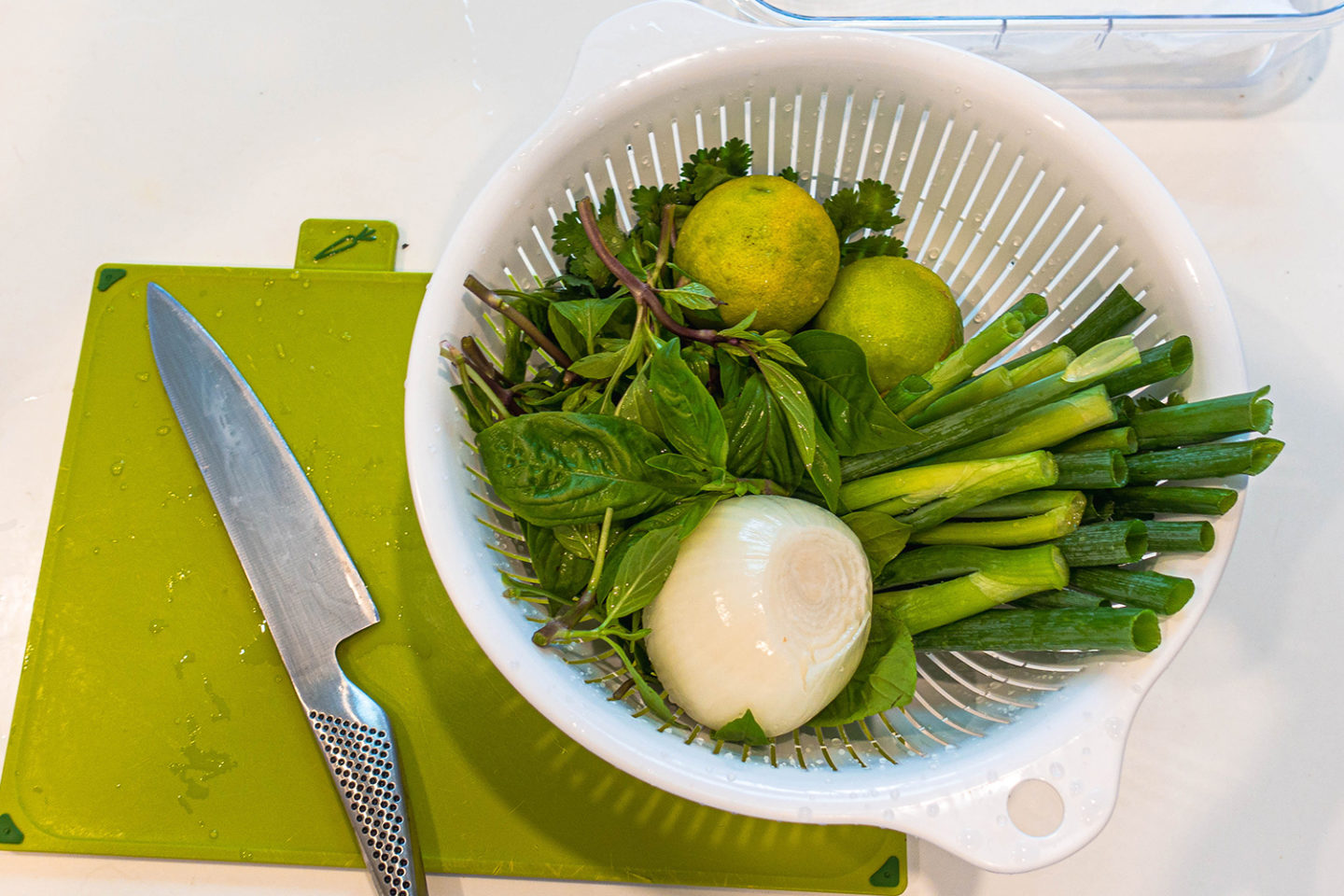
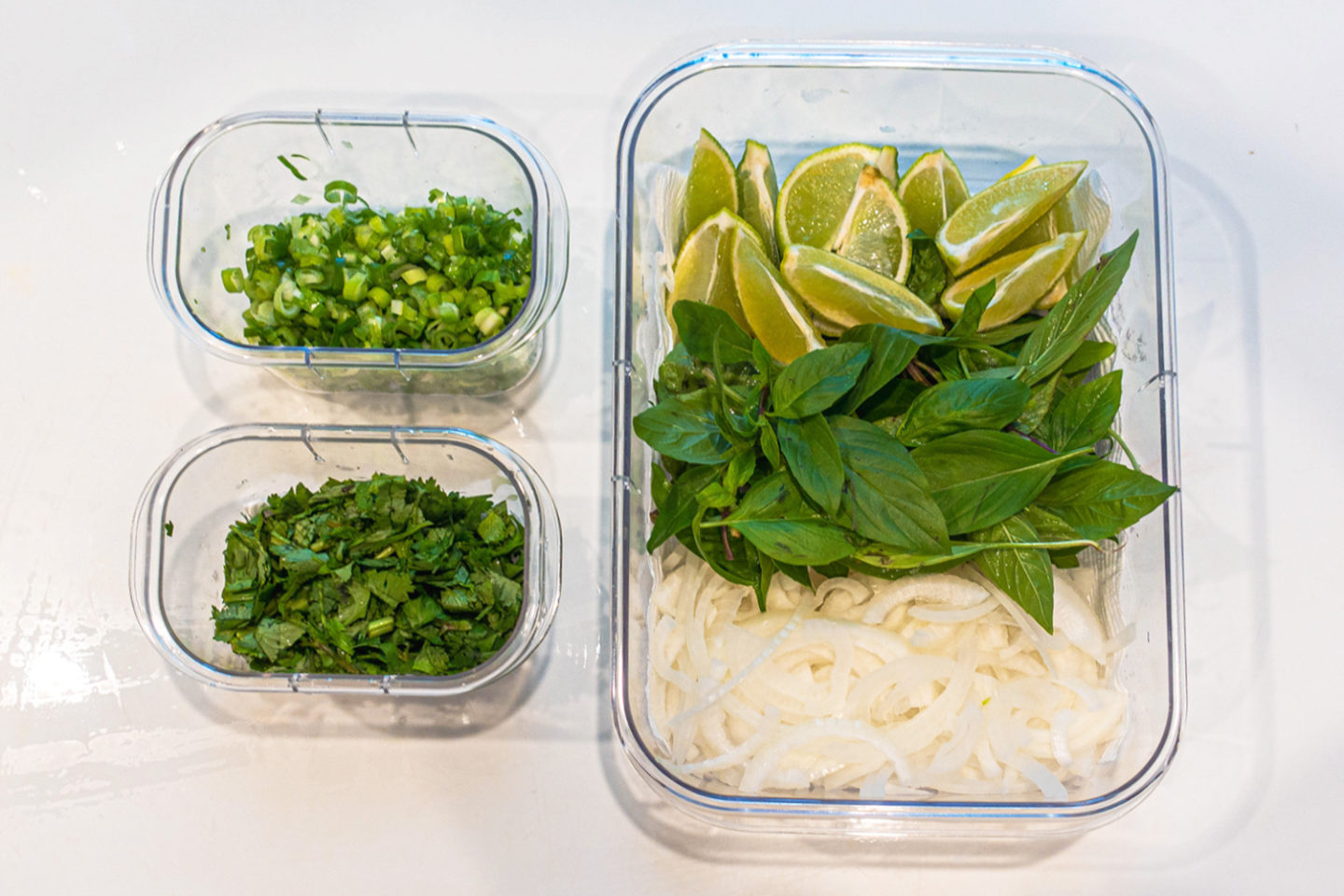
For the herbs and garnish, washed everything and:
- Chopped coriander into fine pieces
- Chopped off white stems of green onion for the broth, and the rest sliced finely
- Picked out healthy bundles of thai basil
- Sliced lemon/lime into quarters
- Julienned the onion
Cooking
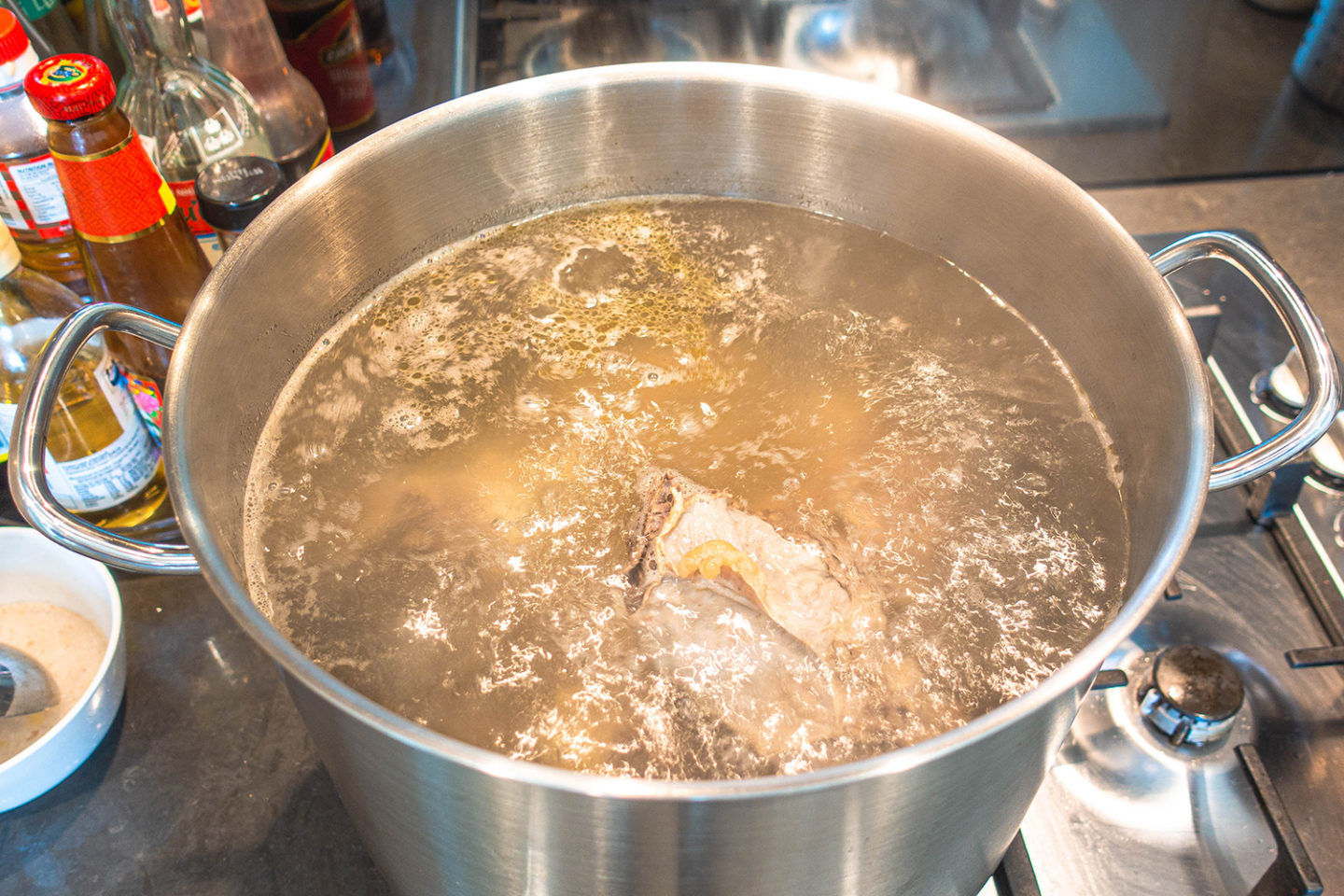
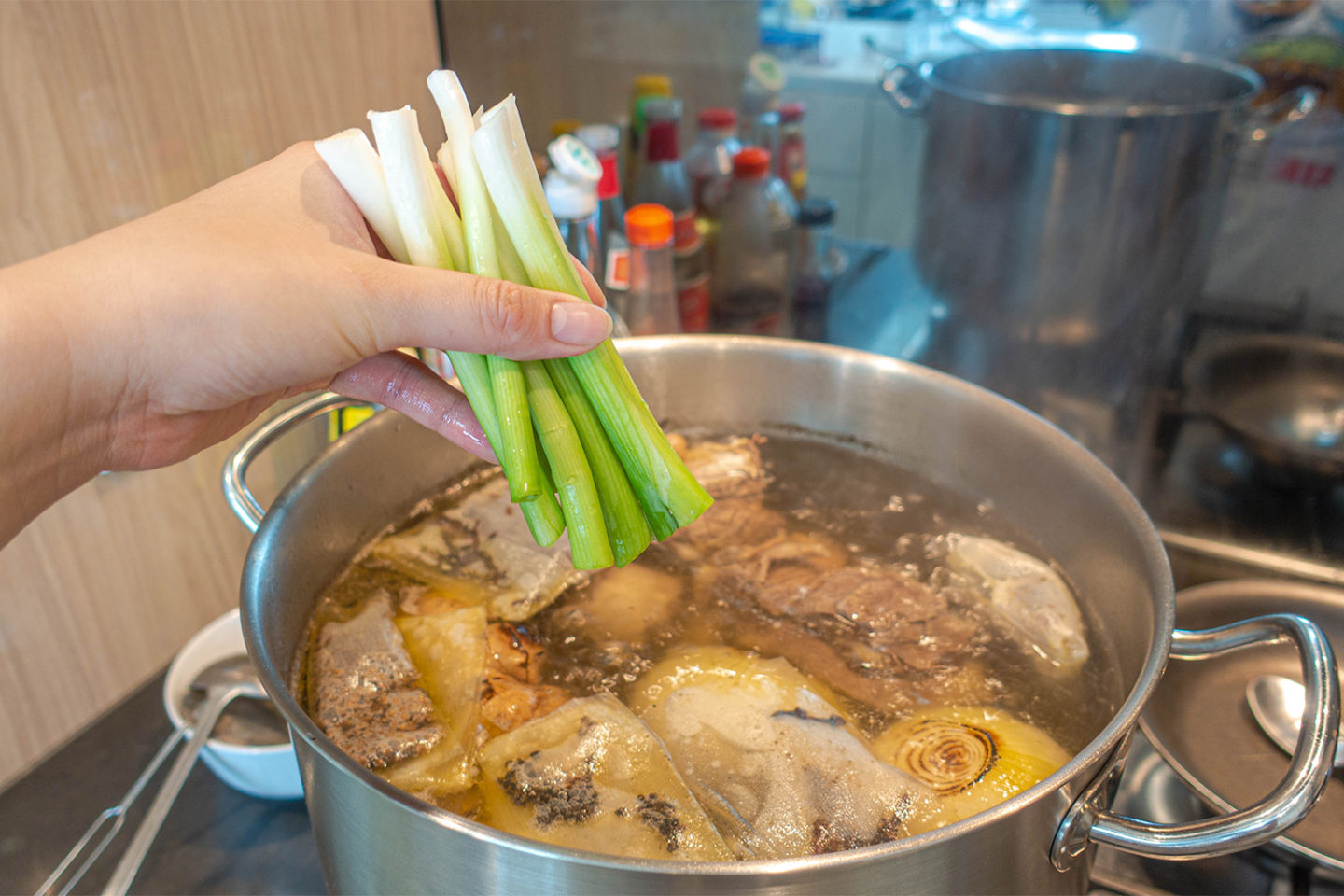
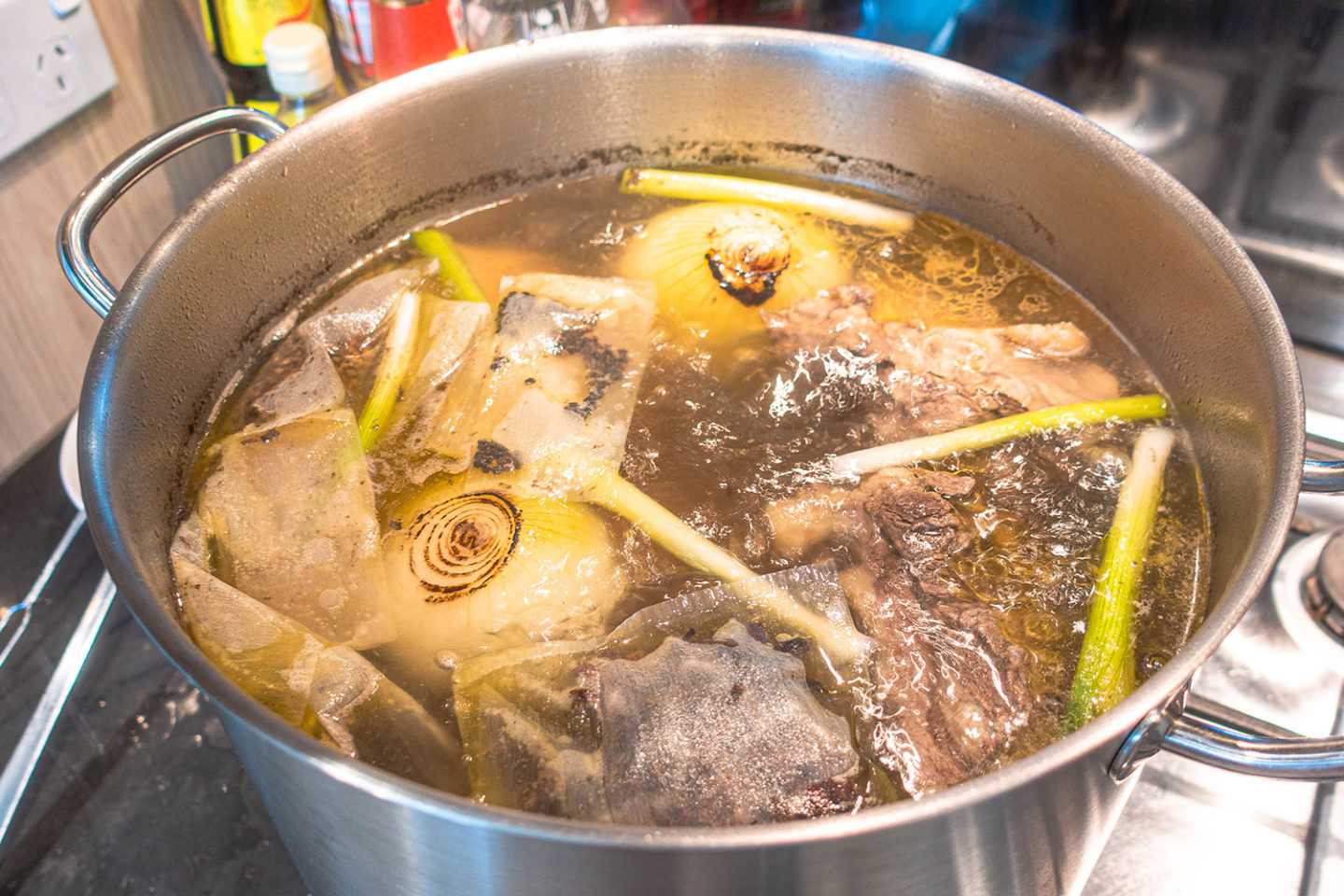
Timeline of the broth:
14:00 Washed meat/bones, parboiled, drained and boiled again
15:00 Once boiling, turned to a high simmer. Continued topping up with water
16:00 Added in onions, green onion stems, ginger and spices. 20:00 Turned off heat. Left overnight.
14:00 Washed meat/bones, parboiled, drained and boiled again
15:00 Once boiling, turned to a high simmer. Continued topping up with water
16:00 Added in onions, green onion stems, ginger and spices. 20:00 Turned off heat. Left overnight.
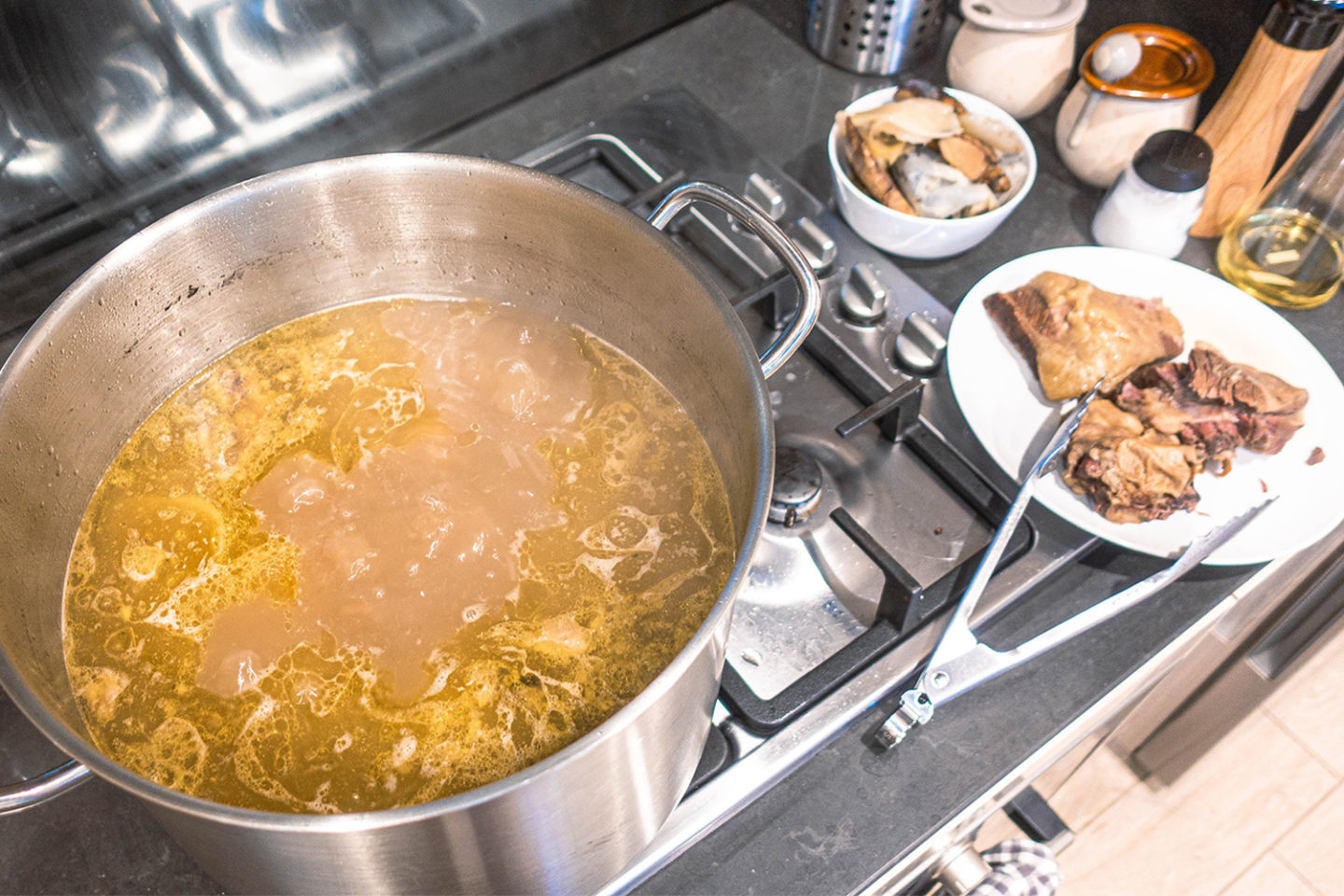
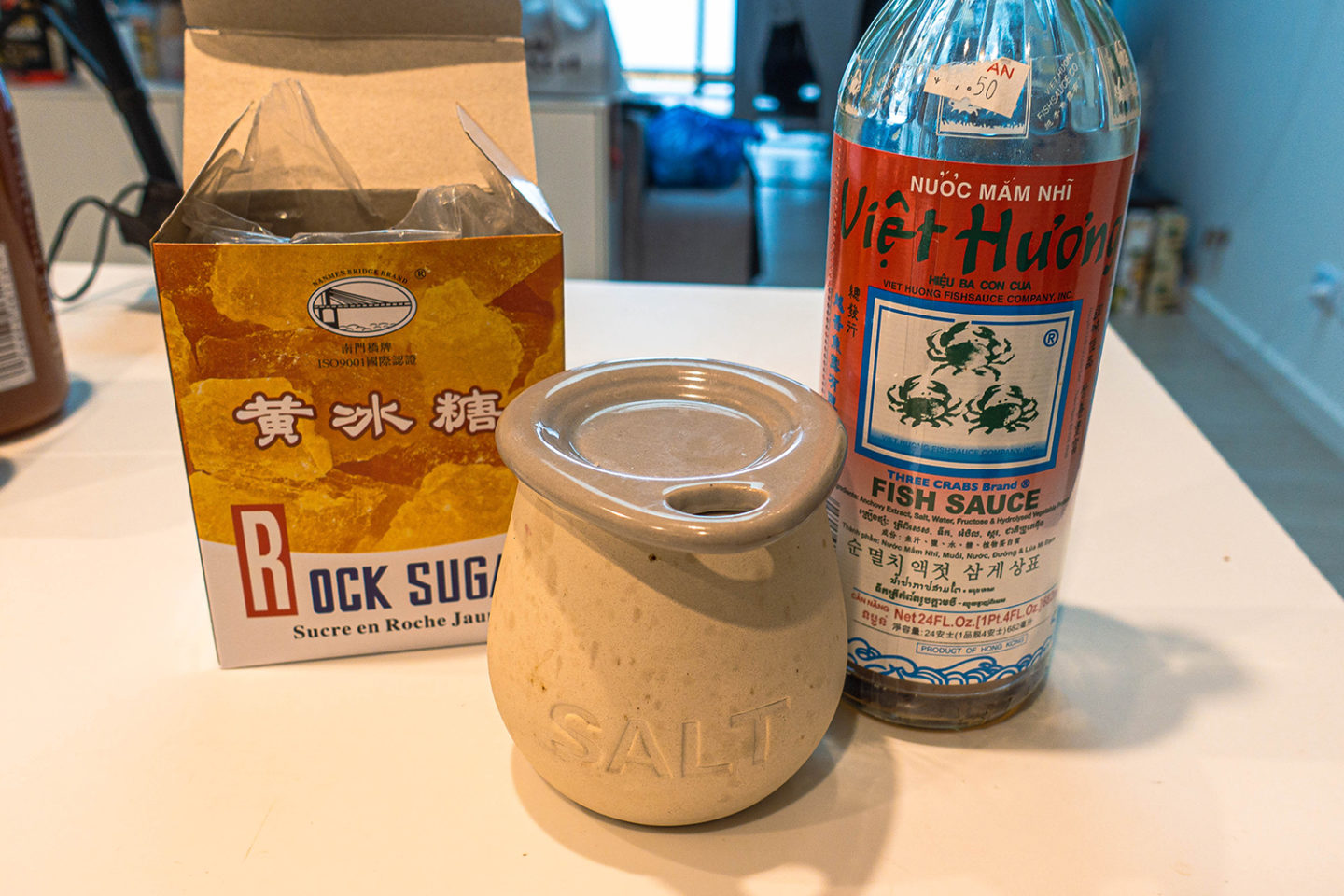
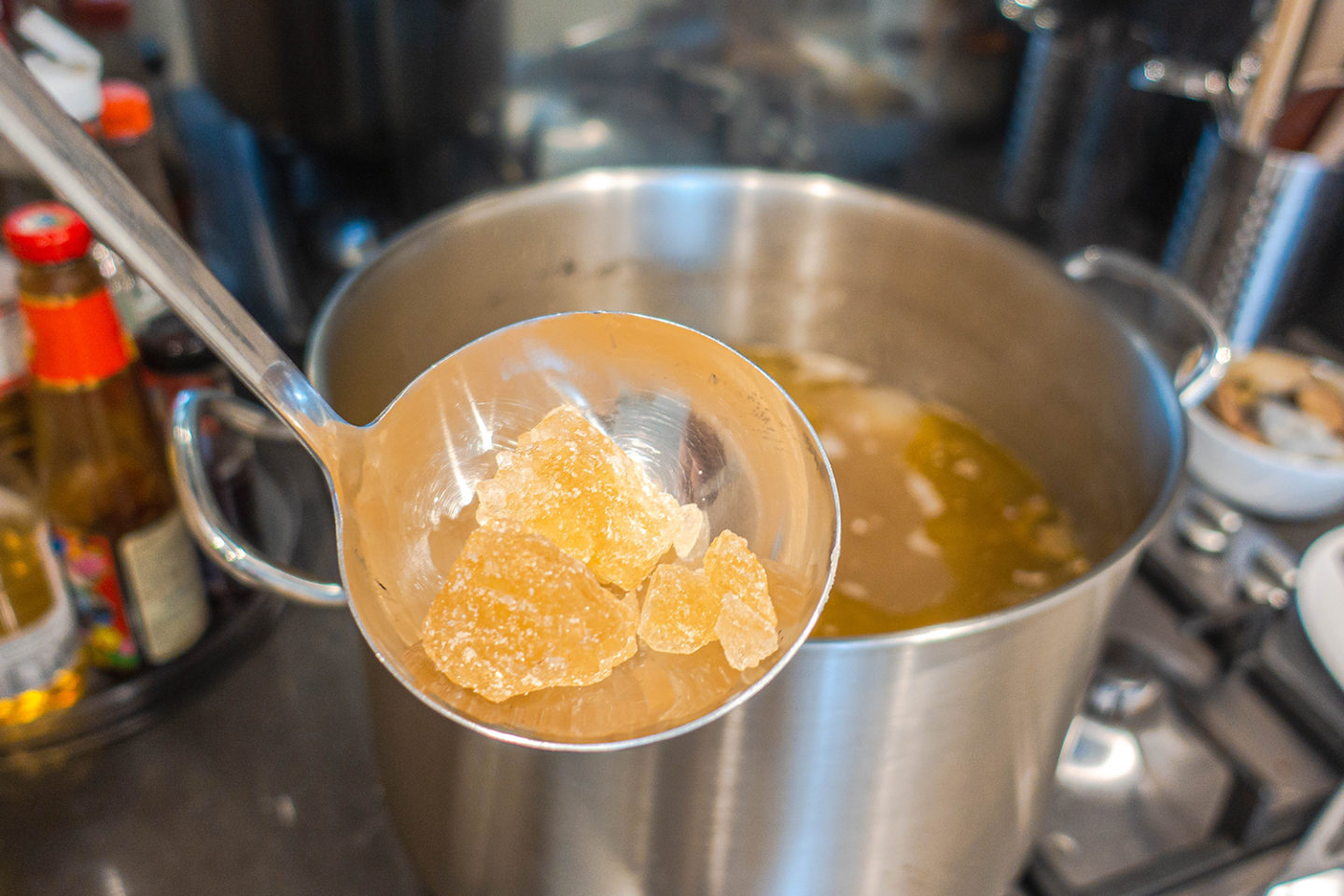
Continuing next day
07:00 Turned to high simmer. Removed brisket and spice packets
08:00 First seasoning with salt, rock sugar, and fish sauce – approx half ladle each
10:00 Second seasoning with salt, rock sugar, and fish sauce – approx half ladle each
12:00 Third and final seasoning – sprinkles of everything and a bit of grounded pepper
13:00 Served 🤤
As you can see, leaving the broth overnight turned the colour into this rich yellow hue with a layer of beef fat on top.
Most people will slice the brisket so it can be added in the bowl later. I ended up throwing it back in to tenderise it to pieces 😆
07:00 Turned to high simmer. Removed brisket and spice packets
08:00 First seasoning with salt, rock sugar, and fish sauce – approx half ladle each
10:00 Second seasoning with salt, rock sugar, and fish sauce – approx half ladle each
12:00 Third and final seasoning – sprinkles of everything and a bit of grounded pepper
13:00 Served 🤤
As you can see, leaving the broth overnight turned the colour into this rich yellow hue with a layer of beef fat on top.
Most people will slice the brisket so it can be added in the bowl later. I ended up throwing it back in to tenderise it to pieces 😆
Serving
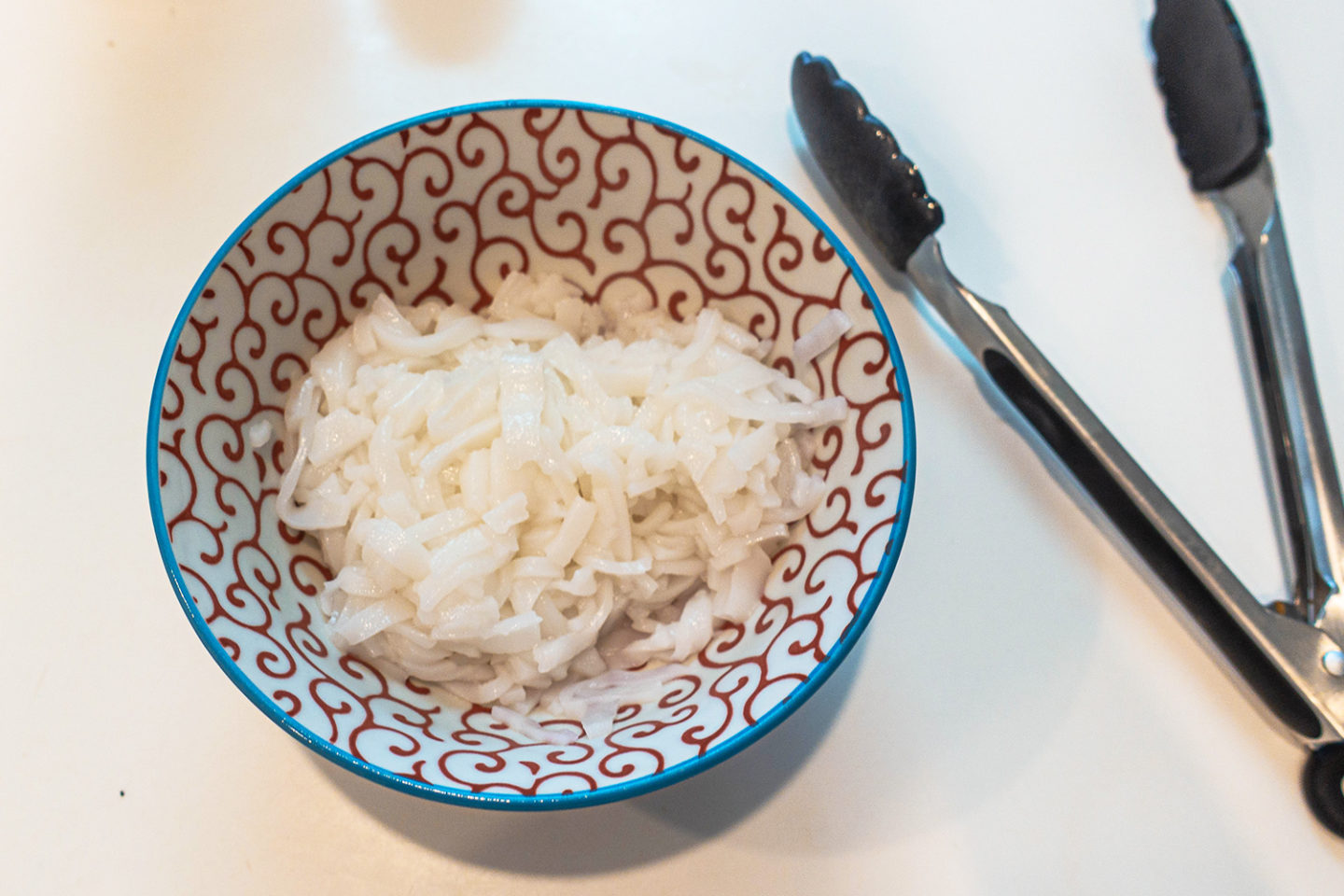
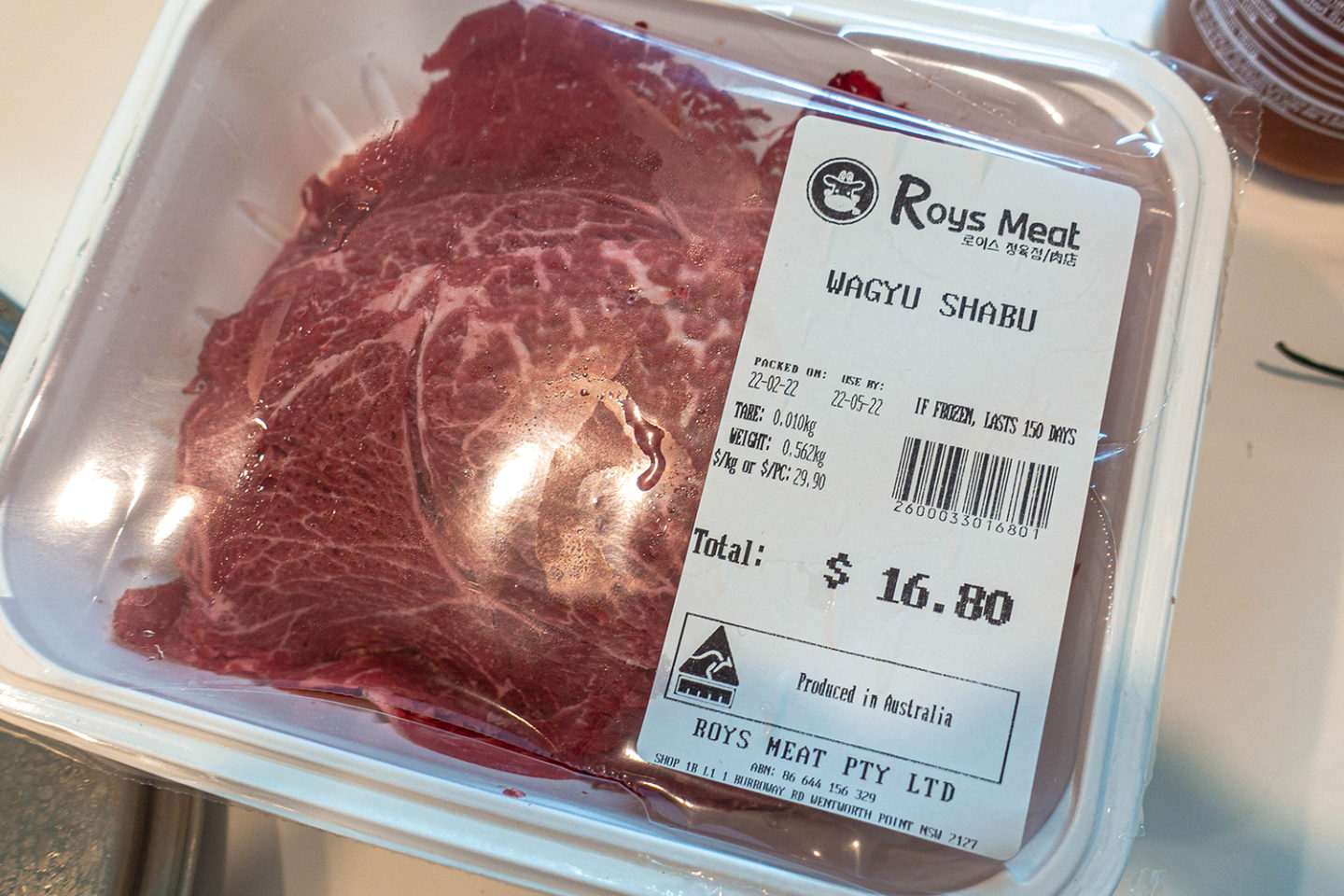
- Cooked the noodles in a pot of boiling water
- Added briskets and oxtail.
- Added raw sliced sirloin. My butcher didn’t have this so I opted for these wagyu shabu cuts.
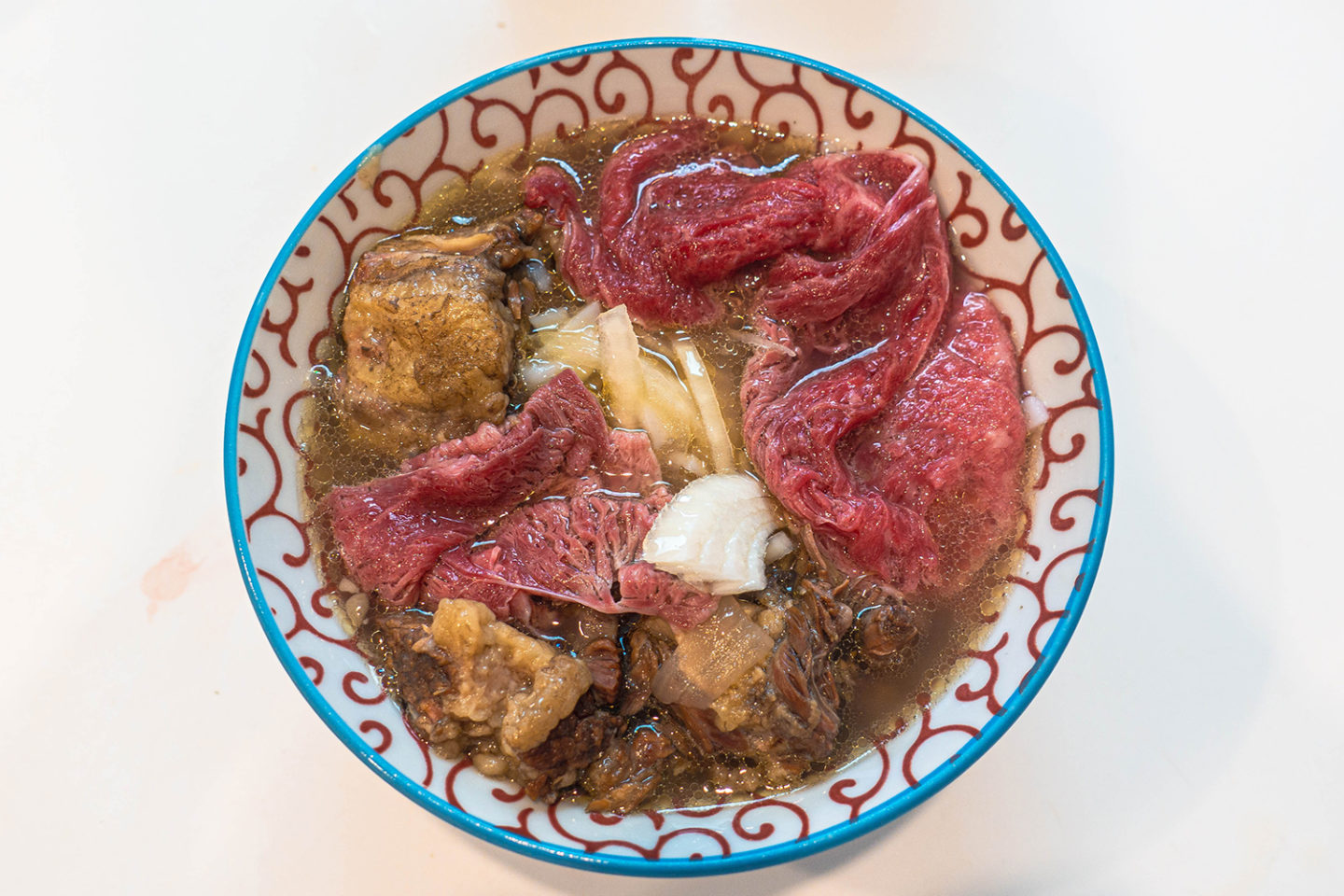
Personally, I prefer cooking the raw beef in hot water and placing it in my bowl because I don’t enjoy the fat that comes out. But at restaurants, they will leave it in raw and allow the broth to cook it as they bring the bowl to you. For aesthetics, I have left the raw beef in 😂.

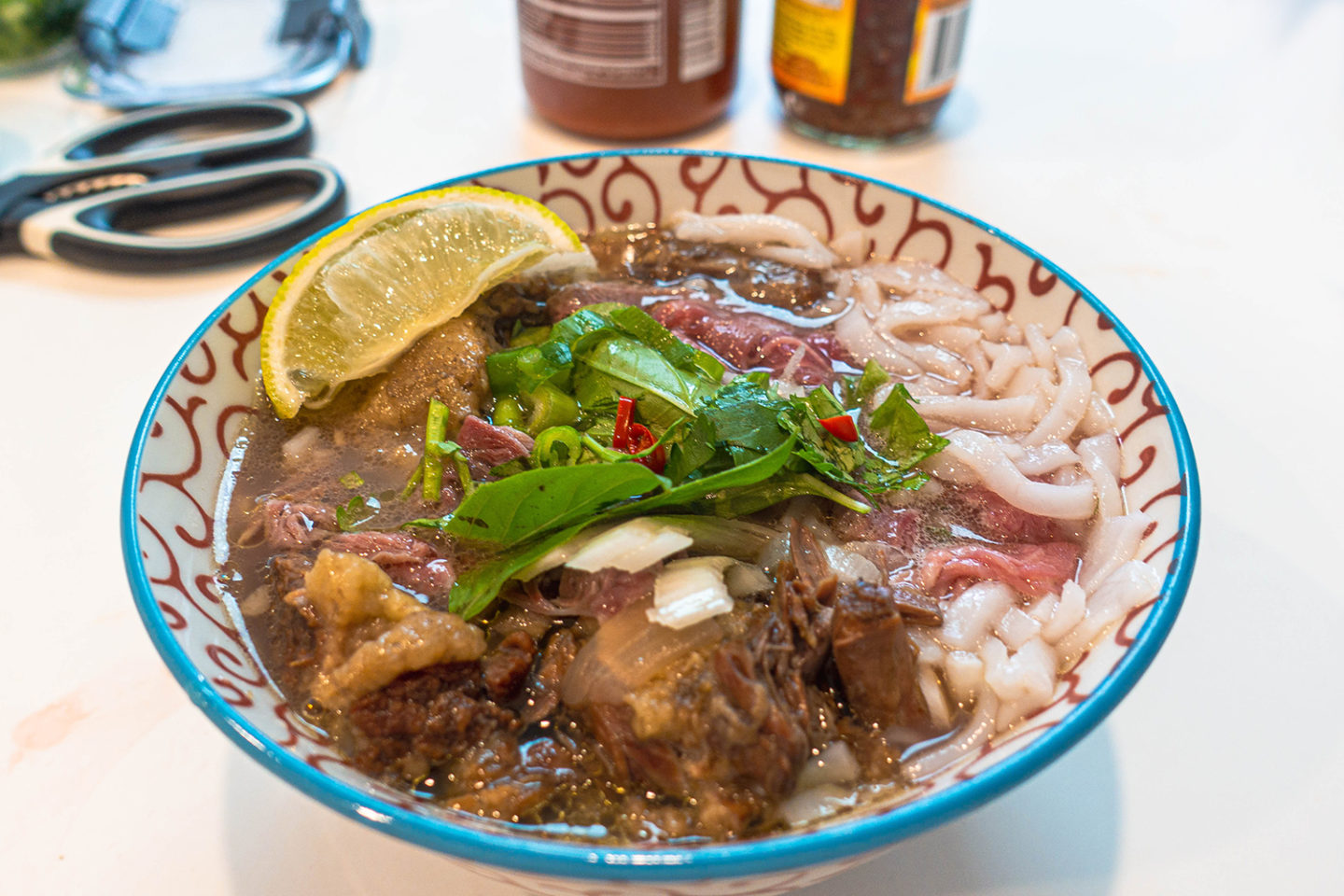
Finally, I added all the garnishes and herbs and voilà, homemade phở 🥰.
Feedback
Mick said the flavours were on point and the broth was dark and clear, however, the beef fat was overwhelming, making him feel gluttonous 😂. Luckily I removed the layer of beef fat the next day so he was able to smash a few more large bowls. Our friend also had a fresh serving, and she ended up having 2 servings the same night hehehe. Not bad for a first attempt.
Hopefully this step by step guide was useful to any amateur cooks. And if not, I know this post will be useful to me because my memory is horrid .
Thank you for reading. Happy eating!
Hopefully this step by step guide was useful to any amateur cooks. And if not, I know this post will be useful to me because my memory is horrid .
Thank you for reading. Happy eating!

Author
I remade the pho today, following the same instructions and timeline.
The only changes was that I took out the brisket around 7pm (4 hours of simmer) and the next morning, my broth was less murky, more clear. I also removed the oxtail, onions and any major fat pieces the next day around 9am so that only the broth + bones was left in the pot.
The flavour test was good. I’m serving it to our Lebanese family tonight so hoping they love it 🥰
Truthfully, there aren’t huge differences between the three.
https://apostrraff548.com
And since they’re universal truths about life, they help persuade your reader to accept your message.
You get up and keep trying.
But Yoda isn’t having it.
Let me ask you.
One of his most notable is, An ounce of prevention is worth a pound of cure.
But these days.
Pick an aphorism that relates to your message and use it to stay focused on your overarching theme.
What is an Aphorism.
Brevity is the key.
Speaking of being safe, that’s another aphorism example that you’ve probably heard before.
See for yourself.
Aphorism Examples in Everyday Speech
He’s earned that title because he’s authored dozens of aphorisms.
This quote came from Wales, first appearing in an 1866 publication.
So my advice.
Hello. And Bye.